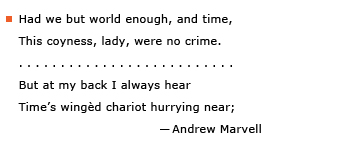The ellipsis mark
The ellipsis mark consists of three periods, with space before and after each period.
Ellipsis mark for deleted material within a sentence
Use an ellipsis mark to indicate that you have deleted material from an otherwise word-for-word quotation.

Ellipsis mark for deletion of a full sentence
If you delete a full sentence or more in the middle of a quoted passage, use a period before the three ellipsis dots.

Ordinarily, do not use the ellipsis mark at the beginning or at the end of a quotation. Readers will understand that the quoted material is taken from a longer passage.

Ellipsis mark for deletion of a line of poetry
In quoted poetry, use a full line of dots to indicate that you have dropped a line or more from the poem.

Ellipsis mark for an interruption or unfinished thought
The ellipsis mark may be used to mark a hesitation or an interruption in speech or to suggest unfinished thoughts.


Exercise: Other punctuation marks
Related topics:
Using the ellipsis mark in MLA style